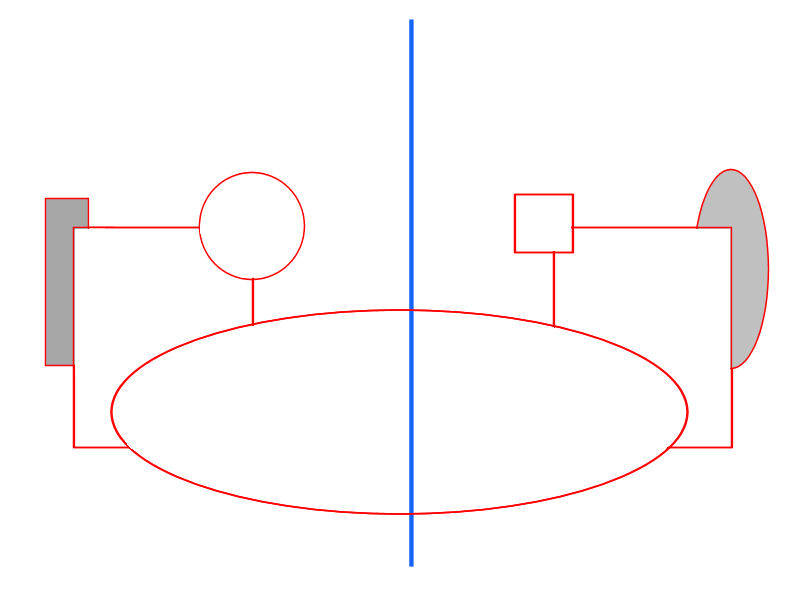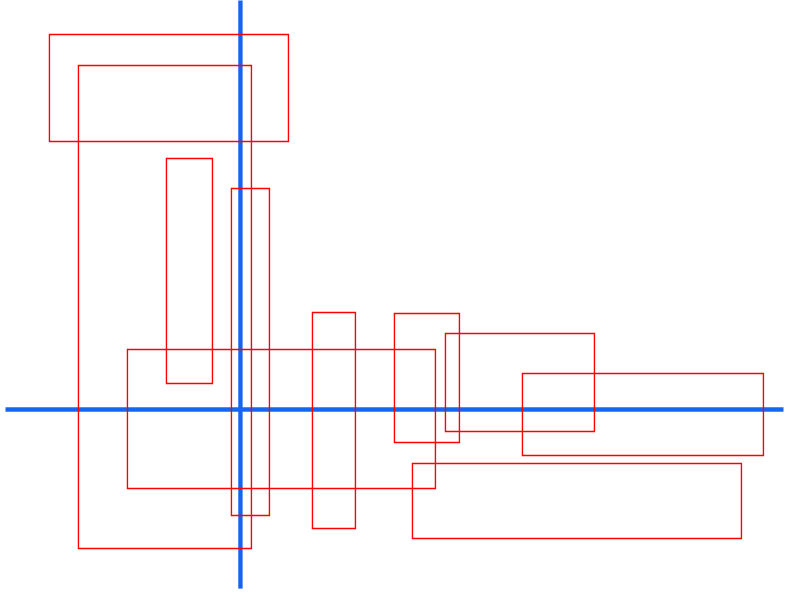We can create a focal point in a composition through striking shapes, bold colors, lighting, the composition scheme, visual axes, or a combination of these elements. Visual axes are imaginary lines found within the composition of the drawing. Here, we'll focus on composition schemes and visual axes. The 9 most well-known composition ground forms are:
|
1. Symmetrical composition; there is always a vertical visual axis. The image itself can be "portrait", "landscape", or square. The visual axis serves as the focal point.
|
| 2. Central composition; there is both a horizontal and a vertical visual axis. The focal point lies at the intersection of the visual axes. |
| 3. Asymmetric composition; The image axis is off-center. Often in a balanced proportion between left and right (can follow the ratio of the golden section). |
| 4. L-composition; both the vertical and horizontal image axes are not in the center. Here too, the ratio between left and right and that between top and bottom are often those of the golden section. The focal point lies again at the intersection of the image axes. |
 By composition, we mean the arrangement of images on the (flat) surface. Through composition, we can direct the viewer's attention to certain parts of the drawing. This is called the focal point. We can also create a feeling using composition, such as calmness or movement, order or chaos..
By composition, we mean the arrangement of images on the (flat) surface. Through composition, we can direct the viewer's attention to certain parts of the drawing. This is called the focal point. We can also create a feeling using composition, such as calmness or movement, order or chaos..






